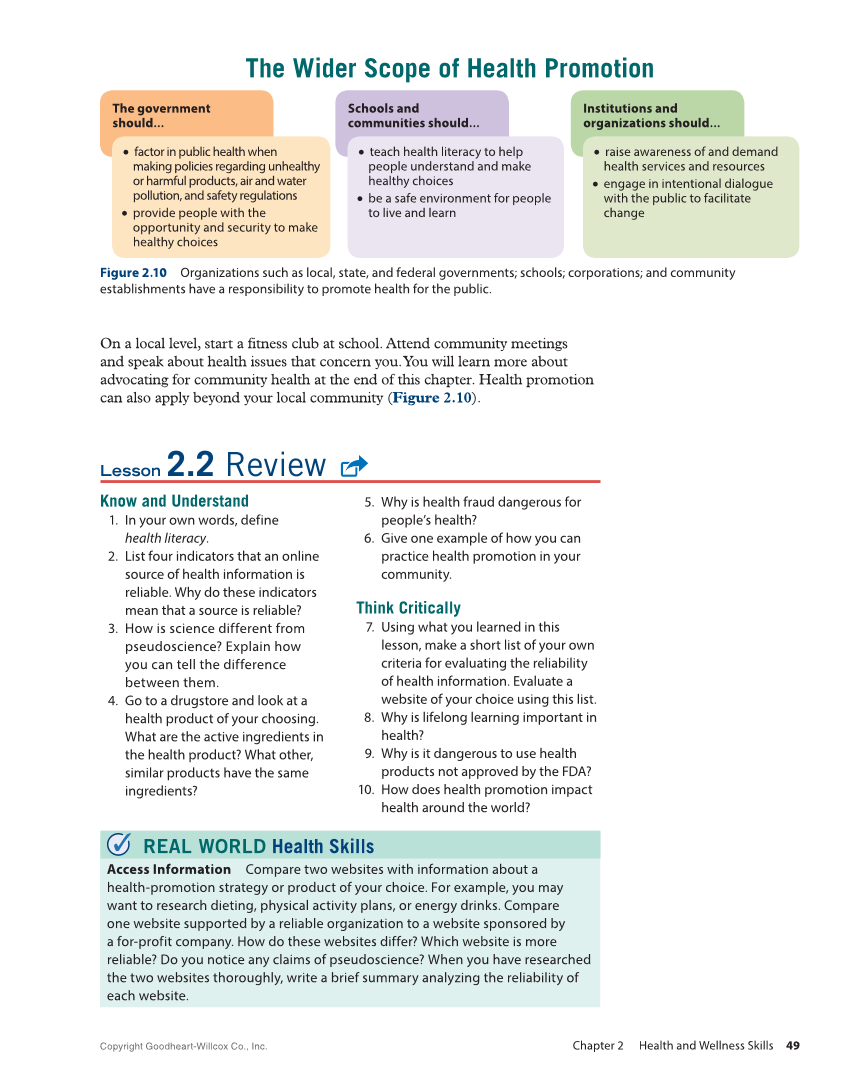On a local level, start a fitness club at school. Attend community meetings and speak about health issues that concern you. You will learn more about advocating for community health at the end of this chapter. Health promotion can also apply beyond your local community (Figure 2.10). Lesson 2.2 Review Know and Understand 1. In your own words, define health literacy. 2. List four indicators that an online source of health information is reliable. Why do these indicators mean that a source is reliable? 3. How is science different from pseudoscience? Explain how you can tell the difference between them. 4. Go to a drugstore and look at a health product of your choosing. What are the active ingredients in the health product? What other, similar products have the same ingredients? 5. Why is health fraud dangerous for people’s health? 6. Give one example of how you can practice health promotion in your community. Think Critically 7. Using what you learned in this lesson, make a short list of your own criteria for evaluating the reliability of health information. Evaluate a website of your choice using this list. 8. Why is lifelong learning important in health? 9. Why is it dangerous to use health products not approved by the FDA? 10. How does health promotion impact health around the world? REAL WORLD Health Skills Access Information Compare two websites with information about a health-promotion strategy or product of your choice. For example, you may want to research dieting, physical activity plans, or energy drinks. Compare one website supported by a reliable organization to a website sponsored by a for-profit company. How do these websites differ? Which website is more reliable? Do you notice any claims of pseudoscience? When you have researched the two websites thoroughly, write a brief summary analyzing the reliability of each website. The Wider Scope of Health Promotion The government should... ● ● factor in public health when making policies regarding unhealthy or harmful products, air and water pollution, and safety regulations ● ● provide people with the opportunity and security to make healthy choices Schools and communities should... ● ● teach health literacy to help people understand and make healthy choices ● ● be a safe environment for people to live and learn Institutions and organizations should... ● ● raise awareness of and demand health services and resources ● ● engage in intentional dialogue with the public to facilitate change Figure 2.10 Organizations such as local, state, and federal governments schools corporations and community establishments have a responsibility to promote health for the public. Copyright Goodheart-Willcox Co., Inc. Chapter 2 Health and Wellness Skills 49
